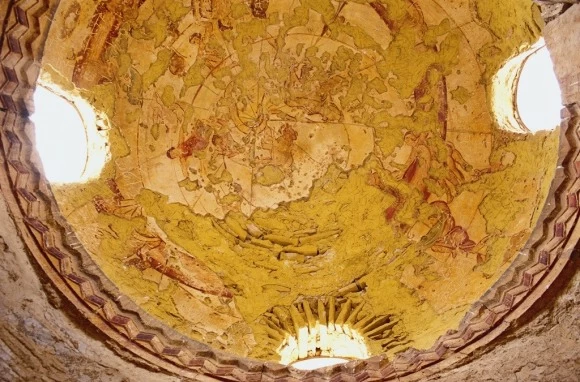Qusayr Amra
Quseir ‘Amra is the most well-known of Jordan’s eastern desert castles. A UNESCO world heritage site, it is noteworthy for its stunning frescos and is often included in tours of Jordan.
Originally constructed in the early 8th century under the Umayyad caliphate, Quseir ‘Amra was both a fortress and luxury retreat. For the city-dwelling princes of the caliphate, this was a place to get in touch with their desert routes, without straying too far from the arterial ancient trade routes connecting Syria and Arabia. Whilst the garrison no longer remains, the abandoned bathhouse was rediscovered in 1898 by Austro-Hungarian explorer Alois Musil. Sadly, however, despite dedicating the time to learning thirty-five dialects of Arabic, his cultural respect did not extend to the site itself. The Painting of the Six Kings was severely damaged in his attempt at removing it.
Popularised in the west by the drawings of artist Alphons Mielich, the frescos were restored by a Spanish team in the late 1970s. This preceded the designation of Quseir ‘Amra as a UNESCO World Heritage Site in 1985 thanks to its significance as one of the best-preserved examples of early Islamic art in existence.






